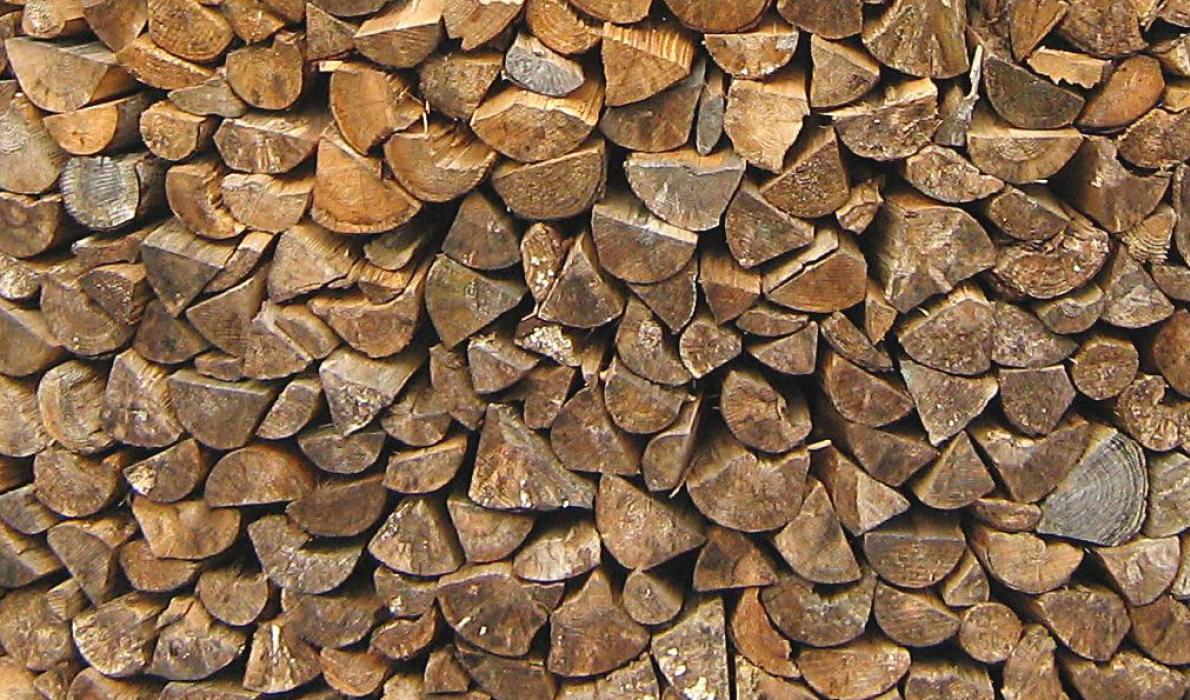Posted September 24, 2015
Last modified October 14, 2015
Twenty years ago, late on a Saturday afternoon after I'd spent the day dumping firewood into the basement, you might have heard me proclaim: "Wood heat's great, but man, I don't want to be 50 and still doing all this work."
Yeah, you guessed it. I'm 56 and still doing all that work. But you know what? I'm OK with it. There is nothing like wood heat, and I know of what I speak, because it's been our primary source since 1988.
I've got a monster of a woodstove, a Bullard (the company has long been out of business), with boiler-plate steel top, sides and bottom and cast iron doors. I can finesse a 24-inch stick of firewood straight in, and easily put a 30-inch piece in if I lay it parallel to the doors.
The stove weighs every bit of 500 pounds. We've moved it twice in the last few years to have the baffle rebuilt and other repairs done. It's rated for a ten-room house. Our place is a tad under 2,000-square-feet, and the stove has no problem keeping most of the rooms at 75 degrees, if that's what we want. When our kids visit and stay in their old bedrooms upstairs, there's another familiar line heard in our house: "Dad, don't put in any more wood!"
The stove itself has a story.
I grew up on Long Island, N.Y., and when the oil crises of the 1970s hit, some people there bought woodstoves to help keep their heating costs down. But for lots of reasons, suburbia isn't the ideal place for burning wood, as the owner of my stove must have concluded. My father saw it on the side of the road, free for the taking.
It came to Maine with my brother when he moved here.
Wood heat is the ultimate energy throwback, a century or more skip back over natural gas, propane, oil and coal. It doesn't make sense for everyone, but where we live, surrounded by dozens of acres of woods, there are no neighbors to bother with the smoke and we've got the space to deal with the firewood.
Each year, I buy three cords, cut and split, which costs me $675. Even as cold as last winter was, I still have a cord left over, stacked in the basement.
I try to cut and split a cord or so from our land, and if I'm diligent, I'll get it dry enough to burn in the fall, saving my "bought" wood for winter. There's a little game I play, trying to hold off burning the "good" wood until the winter solstice; sometimes, I even make it to New Year's Day.
Though the woodstove is our primary heat, we also have a rickety old LP-fueled Monitor heater that takes the chill off the room we spend most of our time in, but we mostly use it in fall and spring. We also use a couple of electric space heaters.
But from Christmas until Valentine's Day, the fire in the stove never goes completely out.
The house heats well. It's a solid-log home, with four inches of rigid foam across the entire roof. The logs serve as thermal mass; once they're warm, the house holds the heat. The downside is if we go away for a couple of days in mid-winter, it will take hours to get the home up to 70 degrees.
I try not to think about how many hours of work it takes to move the wood from the yard to the basement and then from the basement to the stove. There's the daily—morning and night—grind of then making or stoking the fire, shoveling out and dumping the ash, and cleaning up the wood and ash debris around the hearth. Knowing how many hours all this takes probably would make me question my priorities in life.
But I've made my peace with it. The process is Zen-like (if sometimes Sisyphean). It gives me exercise and gets me outside. And heating my home through my labor bestows a deep satisfaction.
College of the Atlantic students conducted a survey a few years ago and found deep philosophical differences between those who used woodstoves and those who did not. Those without woodstoves were understood as “modern consumer families” who liked turning a thermostat to make heat, seeing it as a service provided by professionals. The wood burners, COA students said, were self-reliant “Maine Yankee” types, seeing heating as an activity, “something you do for yourself.”
The modern consumers expect heat to remain constant and even, while the Maine Yankees like getting near the stove to get warm. The Yankee family also accepts a certain amount of ash and dirt around the stove. The modern family sees heat like a waiter in a restaurant, at their beck and call. The Yankee family is engaged with wood heat, likes the look and feel of the wood, even enjoys the smell of smoke and revels in the stove’s ambiance.
I still dream of solar electric panels powering heat pumps, especially for the retirement years, but if I'm 75 and still burning wood, I think my old bones would welcome that wonderful warmth.
Tom Groening is editor of The Working Waterfront.

Contributed by




